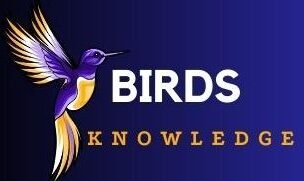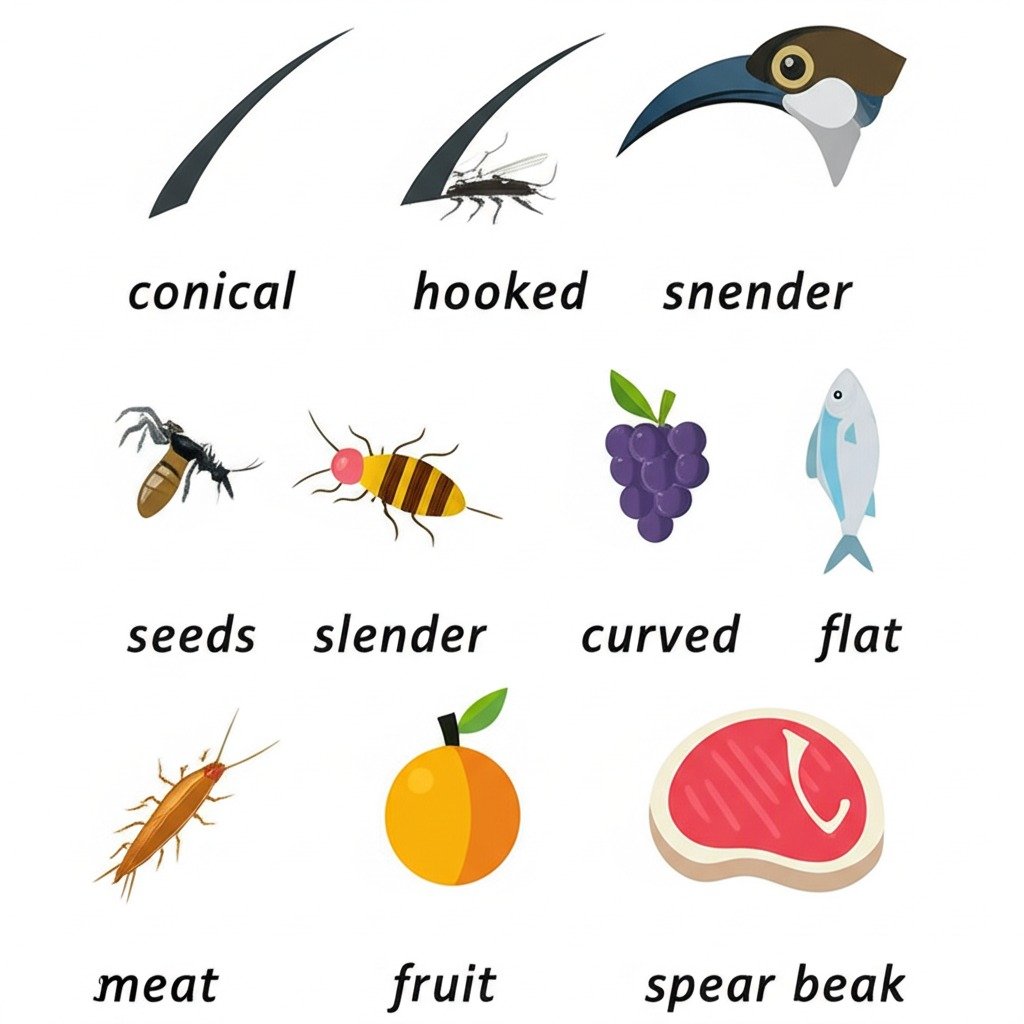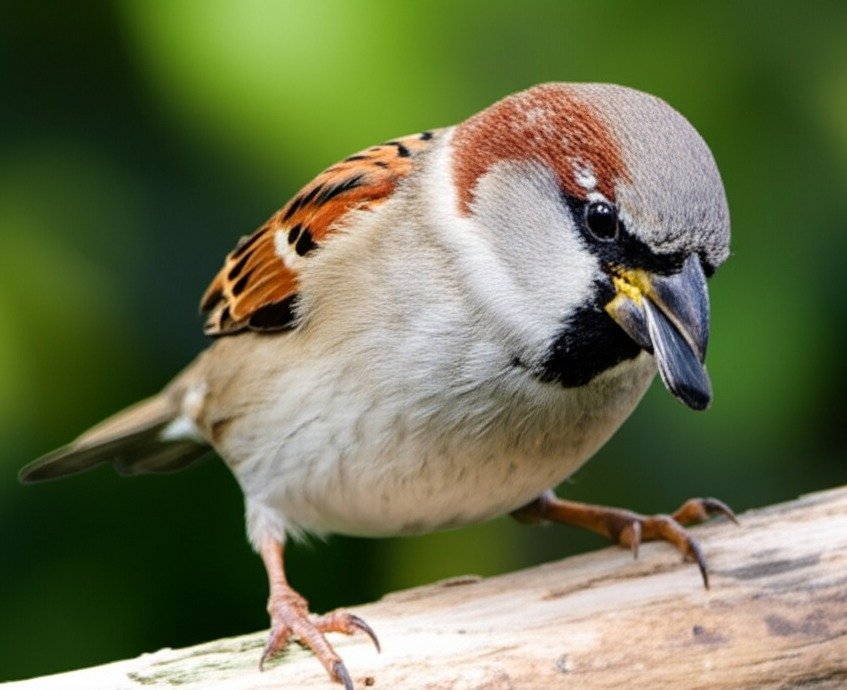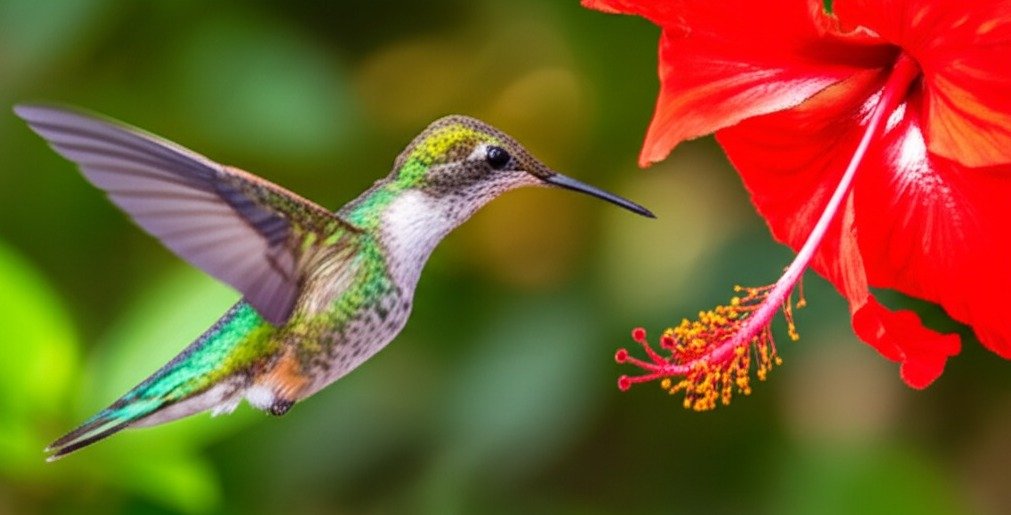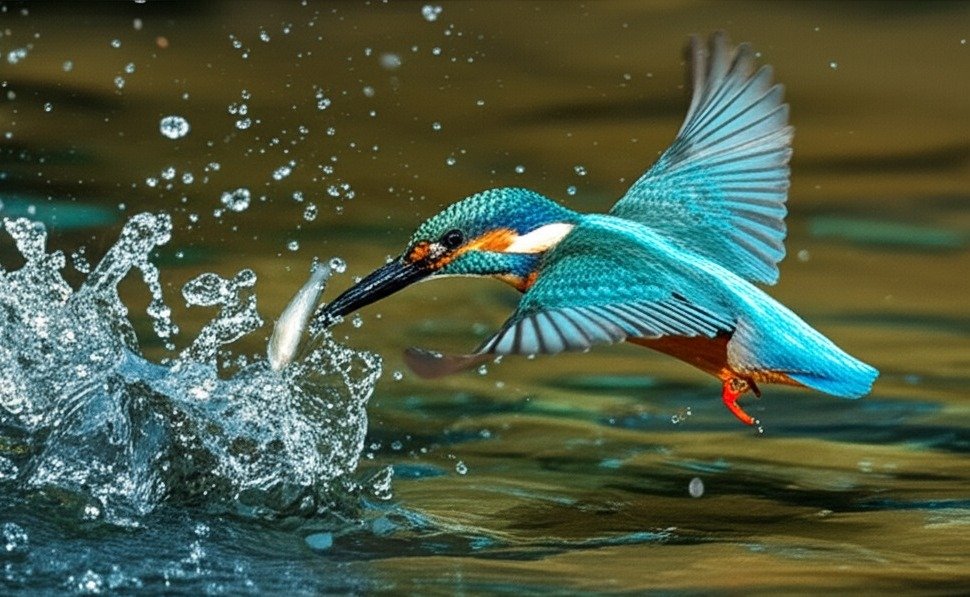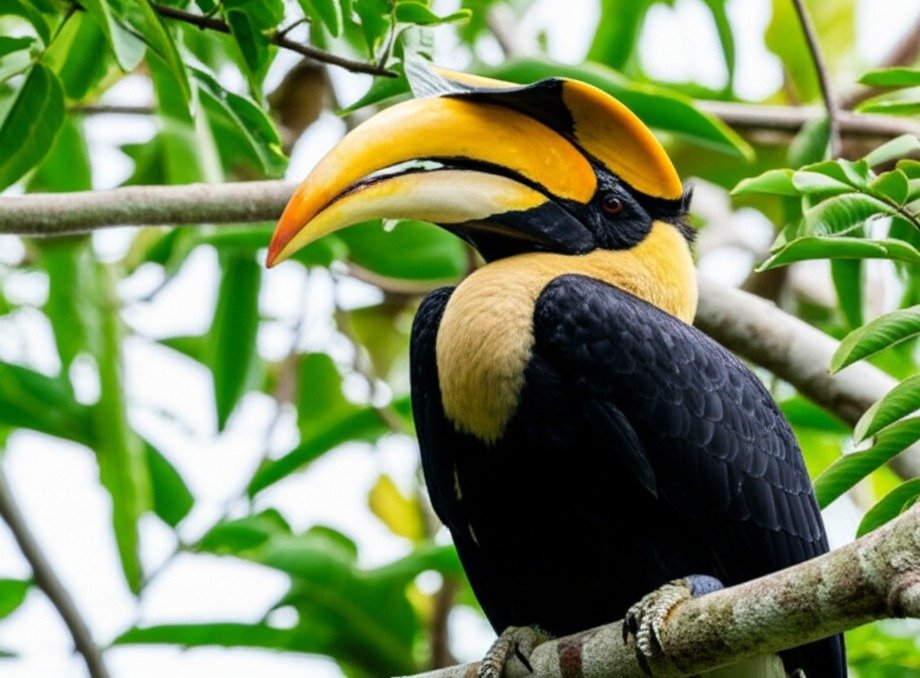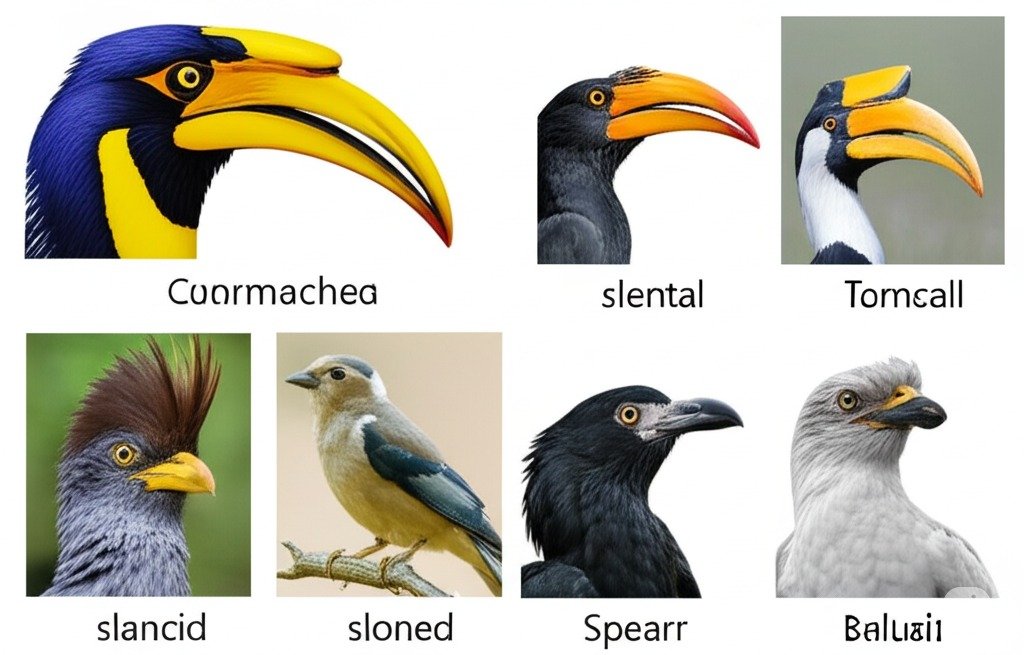Diverse Diets and the Evolution of Bird Beaks 🐦🦉🐧
Birds are among the most diverse creatures on Earth, and their beaks reflect this variety. Over millions of years, birds have evolved beak shapes and structures tailored to their food preferences—an incredible example of nature’s adaptive power. From seed-cracking sparrows to nectar-sipping hummingbirds, each beak type is perfectly suited to the bird’s diet and environment.
1. Types of Food Birds Eat 🍇🍅
Bird diets vary significantly based on species, habitat, and lifestyle. Here’s a look at the different types of food birds consume:
a. Seeds and Grains
Many small birds like sparrows, doves, pigeons, finches, and parakeets survive primarily on seeds. They consume grains such as rice, wheat, corn, sunflower seeds, and safflower. These birds also play a role in seed dispersal, helping plants reproduce.
b. Fruits and Berries
Birds like parrots, bulbuls, koels, and hornbills feed on fruits such as mangoes, papayas, bananas, grapes, and berries. Fruit-eating birds are vital for forest regeneration as they spread seeds through droppings.
c. Insects and Larvae
Insectivorous birds—including robins, starlings, drongos, cuckoos, kingfishers, and woodpeckers—consume insects, larvae, caterpillars, and spiders. This diet supplies essential protein and provides natural pest control in agriculture.
d. Nectar and Pollen
Sunbirds and hummingbirds feed on flower nectar and pollen. Their feeding behavior promotes pollination, which is crucial for plant reproduction.
e. Fish and Aquatic Creatures
Kingfishers, herons, cormorants, and gulls hunt fish, frogs, and small aquatic animals. These birds help regulate aquatic ecosystems by keeping fish populations balanced.
f. Meat and Carrion
Birds of prey such as eagles, kites, hawks, owls, and vultures eat small mammals, reptiles, and even dead animals. Vultures play a critical role in cleaning up carcasses, preventing disease spread.
g. Omnivorous Birds
Crows, starlings, and similar birds are opportunistic feeders. They eat seeds, fruit, insects, meat, and even leftovers—adapting to what’s easily available in their environment.
2. How Bird Beaks Evolved to Match Their Diets
A bird’s beak isn’t just a tool—it’s an evolutionary marvel shaped by millions of years of dietary adaptation. Here’s how different beak types reflect what birds eat:
a. Conical Beak (Seed-Eaters)
- Structure: Short, strong, cone-shaped.
- Function: Ideal for cracking hard seed shells using powerful jaw muscles.
- Examples: Sparrows, finches, parakeets.
b. Slender or Tweezer-like Beak (Insect-Eaters)
- Structure: Long, thin, sometimes sharp.
- Function: Great for picking insects from bark, soil, or catching them mid-air. Woodpeckers use strong, chisel-like beaks to dig into wood.
- Examples: Robins, drongos, kingfishers, woodpeckers.
c. Curved or Hooked Beak (Fruit-Eaters)
- Structure: Curved, large, often strong.
- Function: Helps peel or cut fruit into pieces.
- Examples: Parrots, koels, hornbills. Hornbills have large beaks designed to grasp big fruit.
d. Long Curved Beak (Nectar Feeders)
- Structure: Slender, tube-like, often curved.
- Function: Perfect for extracting nectar from deep flowers, aided by a long tongue.
- Examples: Hummingbirds, sunbirds.
e. Pointed Spear-like Beak (Fish-Eaters)
- Structure: Sharp, long, sometimes with a pouch.
- Function: Helps catch and hold slippery fish. Some like pelicans store fish temporarily in a throat pouch.
- Examples: Herons, kingfishers, cormorants, gulls.
f. Hooked Beak with Sharp Edges (Birds of Prey)
- Structure: Strong, curved, sharp-edged.
- Function: Tears meat and breaks bones. Sharp talons help catch and grip prey.
- Examples: Eagles, hawks, owls.
g. Filtering Beak
- Structure: Flat beak with fine comb-like structures (lamellae).
- Function: Filters tiny aquatic organisms and algae from water.
- Examples: Flamingos, ducks.
The Importance of Beak Evolution in Birds
The diversity of bird beaks is a textbook example of adaptive radiation—where species evolve different traits to occupy various ecological niches. Darwin’s finches in the Galápagos Islands famously illustrate how beak variations evolved to suit different food sources.
This evolutionary adaptation affects not only diet but also influences reproduction, foraging, survival, and ecological roles. It shows how nature fine-tunes physical traits to ensure the success of each species.
Final Thoughts
Understanding the relationship between birds’ beaks and their diets gives us a deeper appreciation for biodiversity. Whether you’re a birdwatcher, educator, or wildlife enthusiast, recognizing these adaptations enriches your experience of the natural world.
